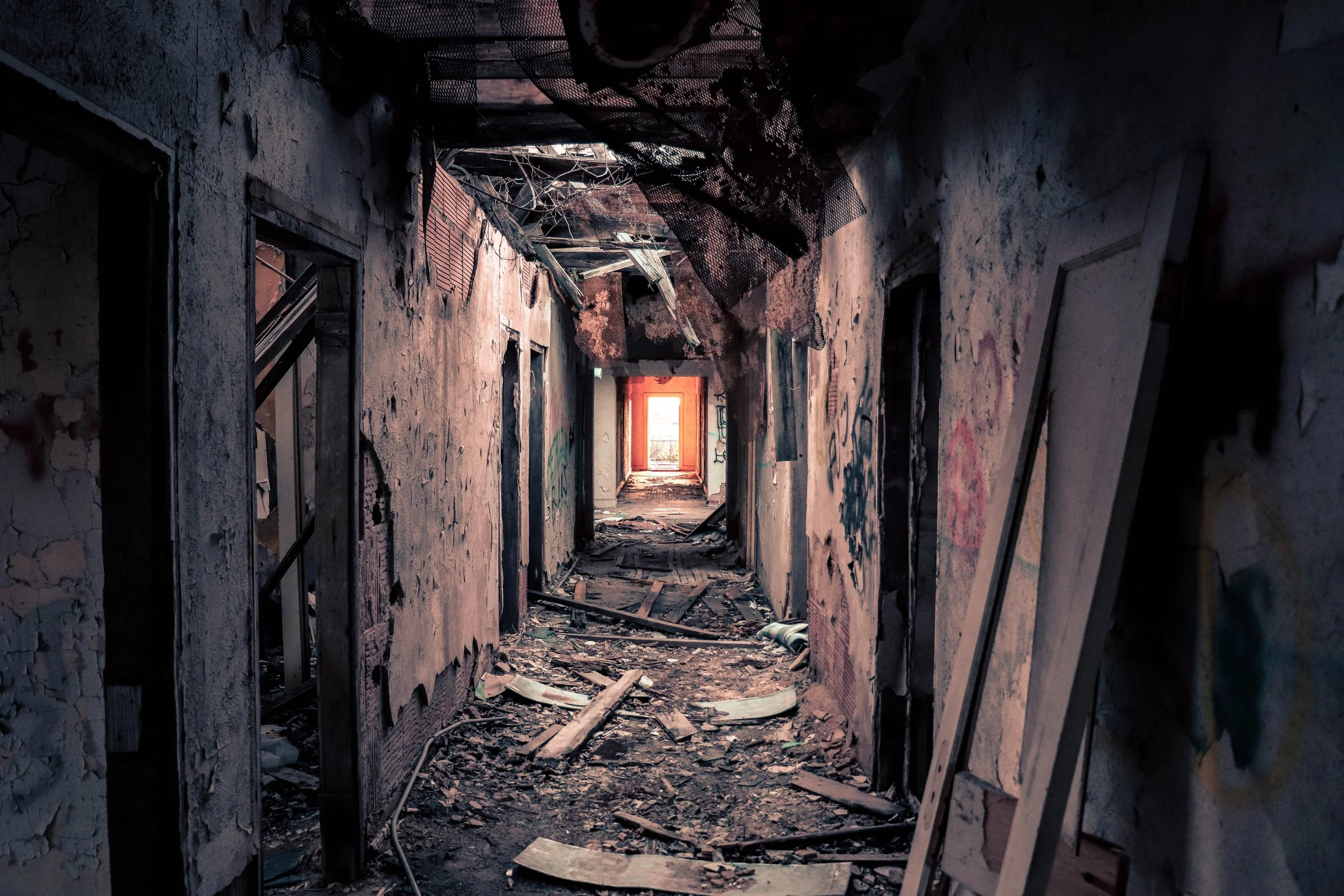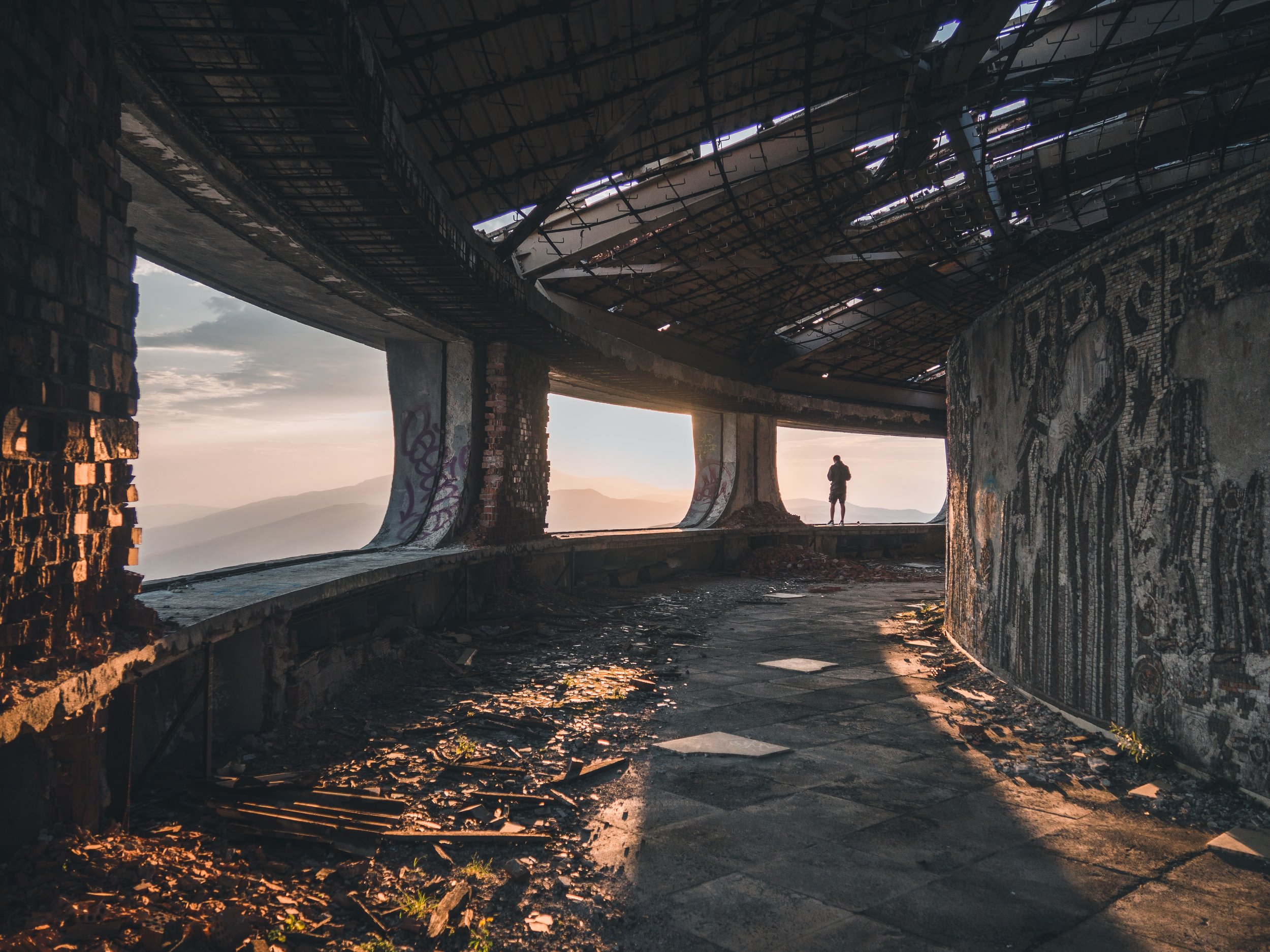Dive headfirst into the vibrant and rebellious world of urban exploration.
An abandoned building in Dallas, TX, USA. CC0 Photo by Jamison Riley
A clandestine movement has taken root in the heart of the concrete jungle, where towering skyscrapers cast long shadows and the city’s pulse beats relentlessly. Urban explorers, audacious pioneers of the metropolitan underworld, have transcended the realm of mere thrill-seeking to become a force of exploration and social change. With a fervor matched only by their insatiable curiosity, these modern-day adventurers navigate our cities’ forgotten nooks and crannies, unearthing hidden stories and breathing life into the abandoned.
Venturing beyond the metropolis’s surface, urban explorers are more than mere adrenaline junkies. They don headlamps and sturdy boots, equipped not only with a passion for the forbidden and abandoned but also a profound desire to expose the secrets that lie dormant, just out of view. These intrepid souls are the custodians of forgotten spaces, the keepers of memories that time and progress threaten to erase. But what sets many of these thrill seekers apart is their mission to harness these spaces to advocate for change and ignite the fires of awareness.
Exploring an abandoned building in Buzludzha, Bulgaria. Photo by Natalya Letunova.
In urban exploration, unearthing hidden gems is an art form. With meticulous research, cunning and bit of audacity, explorers infiltrate abandoned factories, derelict warehouses, and silent asylums that once teemed with life. Their discoveries often yield fascinating historical tidbits that lurk in the shadows of our urban landscapes, waiting to be rediscovered.
Did you know that beneath the bustling streets of New York City, a hidden network of tunnels snakes its way, unseen by the masses above? These forgotten catacombs were once arteries of the city's subway system, now frozen in time. Urban explorers, torches in hand, venture into this subterranean labyrinth, weaving through tracks forgotten by the city above. Through their daring expeditions, they expose the forgotten arteries of the past, awakening a collective sense of awe and inspiring us to question the evolution of our cities.
Catacombs of Paris. 1ivia CC BY 2.0
One early example comes from the Catacombs of Paris, a vast underground ossuary housing the remains of millions of people. In the late 18th century, the catacombs were initially explored by a group of quarry workers; subsequent ventures by early urban explorers brought attention to a massive hidden underworld. Their expeditions and documentation highlighted the historical and cultural significance of the catacombs, which were at risk of being forgotten and destroyed. Their efforts led to the catacombs being officially opened to the public in 1809, ensuring their preservation and creating a unique tourist attraction that continues to this day.
The Spreepark Ferris wheel is overgrown with vines. Björn O. CC BY-ND 2.0
Similarly, a remarkable instance of urban exploration leading to tangible change can be found in the case of Berlin's iconic Spreepark. Once a bustling amusement park in East Germany, it fell into disrepair after the fall of the Berlin Wall. Urban explorers were among the first to return to its abandoned rides and dilapidated structures. Their documentation and artistic endeavors drew attention to the park's unique history and architectural significance. This, in turn, sparked public interest and led to grassroots movements advocating for its preservation. Eventually, the city recognized the cultural value of Spreepark, and it is now being renovated and revitalized as a cultural hub and public space, thanks in part to the efforts of urban explorers.
Today, urban explorers, armed with cameras and a flair for the arts, transform abandoned spaces into living, breathing works of art. With strokes of creativity, they paint vivid pictures of urban decay, capturing the beauty in the broken and turning dilapidated factories into canvases that scream for attention. By juxtaposing the modern world with the remnants of the past, they challenge the status quo and force us to confront the transient nature of our surroundings.
In fact, urban exploration has played a crucial role in shedding light on neglected neighborhoods and highlighting social issues. In the 1960s and 1970s, urban explorers in New York City, known then as "street historians," ventured into abandoned buildings and derelict neighborhoods. Their photographs and documentation exposed the city's neglect of these areas and the struggles faced by marginalized communities. Their work drew attention to urban decay, inequality, and the urgent need for urban revitalization. This activism paved the way for grassroots movements, policy changes, and community involvement in transforming neglected neighborhoods into vibrant, inclusive spaces.
Le Petite Ceinture. Photo by Florian Olivo.
Beyond artistic endeavors, urban exploration is rooted in a more profound purpose – preserving cultural heritage and pursuing environmental consciousness. Many urban spelunkers strive to save architectural relics from the clutches of demolition, advocating for the conservation of our shared history. By documenting these forgotten spaces and shedding light on their plight, they ignite a collective sense of responsibility, prompting us to question the blind march of progress and contemplate alternative paths for urban development.
Take, for instance, the case of the Centralia Mine Fire in Pennsylvania, USA. This underground coal mine fire has been burning since 1962, releasing toxic gasses and pollutants into the air and soil. Urban explorers, recognizing the environmental impact and danger posed by the fire, have documented its effects and brought attention to the ongoing issue. By sharing their findings and raising awareness, they have contributed to the push for environmental remediation and the implementation of measures to mitigate the harmful effects of the fire on the surrounding ecosystem.
Similarly, urban explorers have also played a crucial role in exposing and advocating for the cleanup of contaminated industrial sites, such as abandoned factories and chemical plants. Their explorations and documentation draw attention to these neglected spaces’ potential hazards and environmental risks. By highlighting the presence of pollutants, hazardous materials, and the need for cleanup, they contribute to the dialogue surrounding environmental conservation and encourage responsible remediation efforts.
Once relegated to the fringes of society, urban exploration has evolved into a powerful movement and is even the focus of several social media accounts like Decaying Midwest and Martin Horton who explores South Yorkshire. In the footsteps of these fearless adventurers, a new narrative of urban development is being written. They challenge the status quo, champion the forgotten, and reawaken our senses to the untapped potential of our cities. As modern-day explorers, they continue to rewrite the story of our cities, one forgotten space at a time, bridging the gap between past and present.
Raeann Mason
Raeann is an accomplished traveler, digital storyteller, and guide writer with a degree in Mass Communication & Media. Her work as the Content Manager with CATALYST focuses on reshaping travel culture to be ethically sound and sustainable, while promoting social and environmental reform through cultural exchange. With over a decade of experience crafting unforgettable adventures, she creates and reports on experiences that leave a lasting impact.





